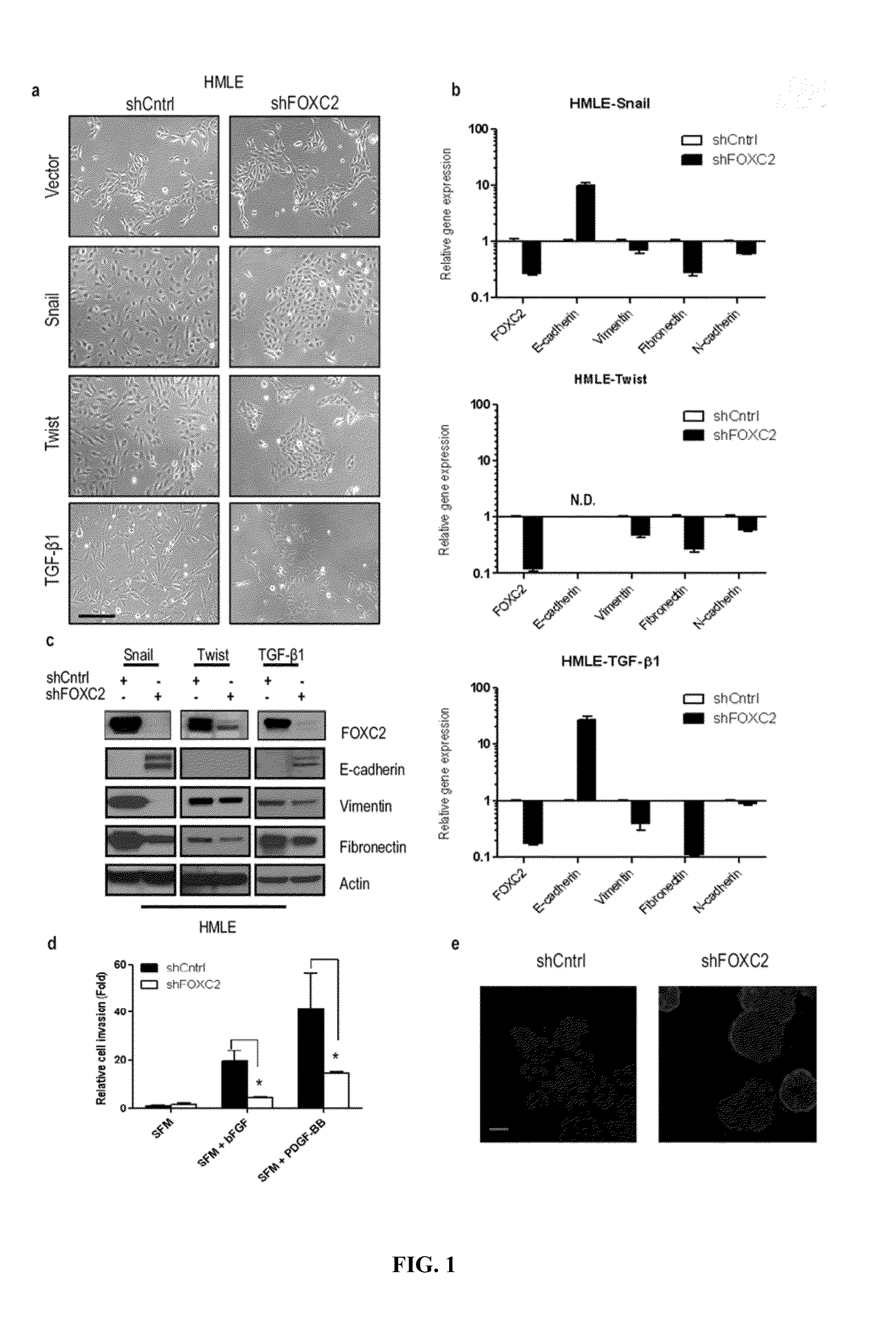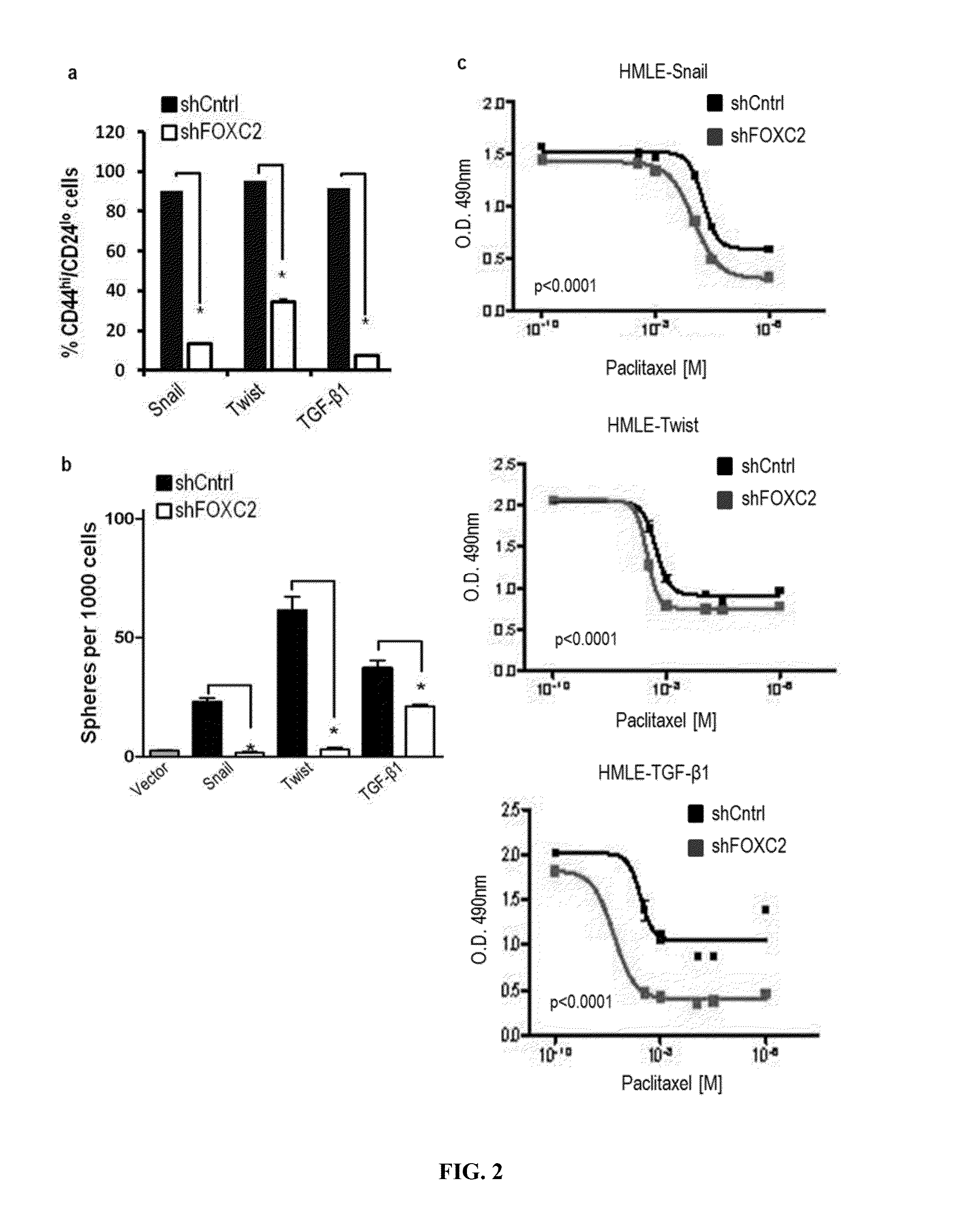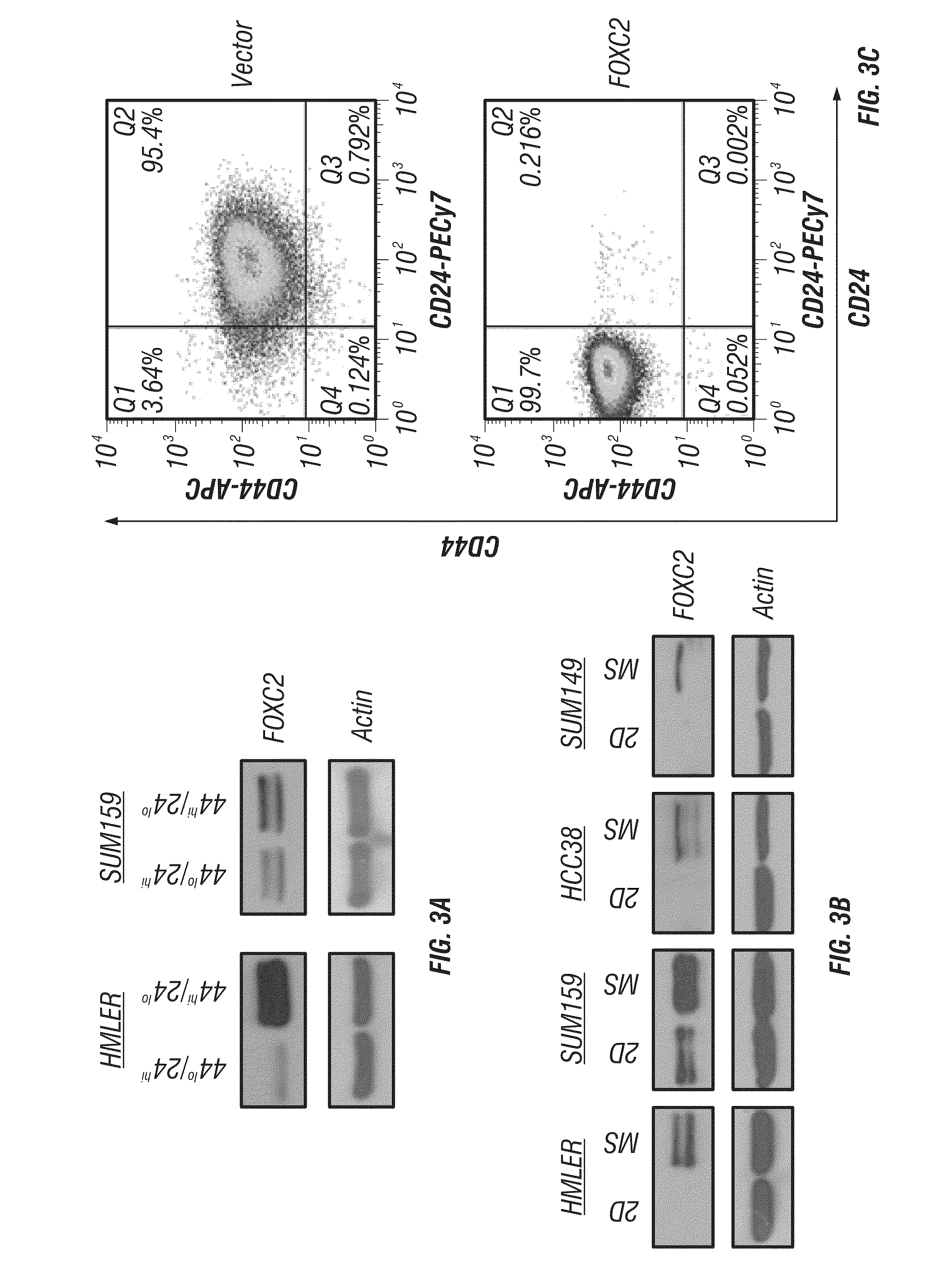Identification of cancer stem cell markers and use of inhibitors thereof to treat cancer
a technology of stem cell markers and cancer, applied in the field of cancer biology, to achieve the effect of significant clinical benefits and improved cancer patient outcom
- Summary
- Abstract
- Description
- Claims
- Application Information
AI Technical Summary
Benefits of technology
Problems solved by technology
Method used
Image
Examples
example 1
FOXC2 is Required for the Maintenance of the Mesenchymal Phenotype Following EMT Induction in Human Mammary Epithelial Cells
[0111]Enhanced expression of FOXC2 has been observed following the induction of EMT by several factors in experimentally immortalized human mammary epithelial (HMLE) cells (Mani et al., 2007) strongly suggesting that FOXC2 may be a critical determinant of multiple EMT programs. To assess the functional role of FOXC2 during EMT, shRNA mediated suppression of FOXC2 was employed in HMLE cells that underwent EMT via ectopic expression of Snail, Twist, or TGF-131. The suppression of FOXC2 had no significant effect on cell growth, but substantially altered the in vitro morphology of all cell lines, including increased clustering of cells into epithelial-like islands with prominent cell-cell contacts and reduced fibroblastic morphology (FIG. 1A). FOXC2 attenuation also led to reduced expression of mesenchymal markers vimentin, fibronectin, and N-cadherin across all ce...
example 2
FOXC2 is Necessary for the Stem Cell-Like Properties Generated Via EMT in Mammary Epithelial Cells
[0113]Previously, HMLE-Snail, -Twist and -TGF-β1 cells were known to aquire properties similar to breast CSCs, including the CD44high / CD24low cell surface markers and an increased ability to form mammospheres (Mani et al., 2008). Here, the attenuation of FOXC2 expression by shRNA in these cells was found to reduce the number of cells with the CD44high / CD24low phenotype compared to the control-shRNA expressing cells (FIG. 2A). In the same conditions, there was a marked decrease in the mammosphere forming ability (FIG. 2B).
[0114]Next, the acquisition of stem cell properties and passage through EMT has been reported to increase the resistance to chemotherapeutic agents (Hollier et al., 2009; Gupta et al., 2009). In accordance with this, suppression of FOXC2 expression in cells that have undergone EMT (HMLE-Snail, HMLE-Twist and HMLE-TGF-131) was found to sensitize them to paclitaxel (FIG. ...
example 3
FOXC2 is Elevated in CSC-Enriched Populations and is Sufficient to Promote the Generation of CSCs and Metastatic Competence in Transformed Human Mammary Epithelial Cells
[0115]Previously, FACS isolation of breast tumor cells with the CD44high / CD24low cell surface phenotype (Al-Hajj et al., 2003) as well as isolation of tumor cells from mammospheres (Dontu et al., 2003) were demonstrated to be able to enrich for populations of tumor initiating CSCs. Using this rationale, the inventors FACS isolated CD44high / CD24low and CD44low / CD24high cellular fractions from HMLER and SUM159 breast cancer cell lines and observed increased FOXC2 protein expression in the CD44high / CD24low stem cell fraction relative to the CD44low / CD24high fraction (FIG. 3A). Increased FOXC2 protein expression was also observed in primary mammospheres isolated from HMLER, SUM159, HCC38, and SUM149 cells as compared to same cells grown in monolayer cultures (FIG. 3B).
[0116]Previously, ectopic expression of FOXC2 was fou...
PUM
| Property | Measurement | Unit |
|---|---|---|
| thick | aaaaa | aaaaa |
| time | aaaaa | aaaaa |
| time | aaaaa | aaaaa |
Abstract
Description
Claims
Application Information
 Login to View More
Login to View More - R&D
- Intellectual Property
- Life Sciences
- Materials
- Tech Scout
- Unparalleled Data Quality
- Higher Quality Content
- 60% Fewer Hallucinations
Browse by: Latest US Patents, China's latest patents, Technical Efficacy Thesaurus, Application Domain, Technology Topic, Popular Technical Reports.
© 2025 PatSnap. All rights reserved.Legal|Privacy policy|Modern Slavery Act Transparency Statement|Sitemap|About US| Contact US: help@patsnap.com



